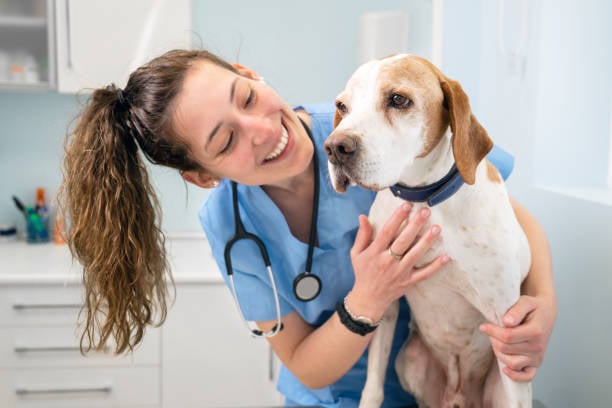Allergies in dogs can be as uncomfortable for our furry friends as they are for us, manifesting in various forms and causing a range of symptoms from mild irritations to severe health issues. As pet parents, understanding the signs, causes, and treatments of allergies in dogs is crucial for ensuring our pets lead happy, healthy lives. This blog post delves into the world of canine allergies, providing essential insights for pet owners to identify, manage, and prevent allergies in their beloved dogs.
Understanding Canine Allergies
Allergies in dogs occur when their immune systems overreact to substances (allergens) that are typically harmless. This overreaction can lead to symptoms affecting their skin, digestive system, and respiratory health.
Common Types of Allergies in Dogs

1. Environmental Allergies
- Caused by allergens like pollen, mold, dust mites, and grass.
- Symptoms include itching, redness of the skin, and respiratory issues.
2. Food Allergies
- Triggered by certain ingredients in their food, commonly proteins like beef, chicken, or dairy.
- Can lead to gastrointestinal issues like vomiting and diarrhea, as well as skin problems.
3. Flea Allergy Dermatitis (FAD)
- An allergic reaction to flea saliva, making even a single flea bite extremely irritating.
- Symptoms include severe itching, hair loss, and skin infections.
Identifying Allergy Symptoms

The signs of allergies in dogs can vary, but some common symptoms to watch for include:
- Excessive scratching, licking, or biting at the skin
- Red, inflamed skin or rashes
- Chronic ear infections
- Sneezing, coughing, or wheezing
- Runny eyes or nose
- Swelling of the face, ears, lips, or eyelids
- Digestive issues such as vomiting or diarrhea
Diagnosis and Treatment

If you suspect your dog has allergies, a visit to the vet is crucial. Diagnosis may involve:
- A thorough physical examination
- Dietary elimination trials for food allergies
- Intradermal skin testing or blood tests for environmental allergies
- Treatment varies depending on the type and severity of the allergy and may include:
- Antihistamines, corticosteroids, or other medications to manage symptoms
- Topical treatments for skin irritation
- Hypoallergenic diets for food allergies
- Immunotherapy for environmental allergies
- Regular flea prevention treatments
Managing and Preventing Allergies

While not all allergies can be cured, there are several strategies to manage and reduce the risk of allergic reactions in dogs:
- Regular Grooming: Helps to remove allergens from the skin and coat.
- Clean Environment: Regular cleaning can reduce the presence of allergens like dust and mold in your home.
- Flea Control: Consistent flea prevention is crucial, especially for dogs with FAD.
- Balanced Diet: Feeding a high-quality, balanced diet can support your dog's immune system.
- Avoid Known Allergens: Once you know what triggers your dog's allergies, take steps to minimize exposure to those substances.
When to See a Vet

It's essential to consult with a veterinarian if:
- Your dog's symptoms are severe or worsening
- You're unable to identify the cause of your dog's allergies
- Over-the-counter remedies aren't providing relief
Allergies in dogs can be challenging to navigate, but with careful observation, proper diagnosis, and effective management, you can significantly improve your pet's quality of life. Understanding the signs and symptoms, consulting with a veterinarian for an accurate diagnosis, and following a tailored management plan are key steps in caring for a dog with allergies. Remember, every dog is unique, and what works for one may not work for another, so patience and persistence are crucial in finding the right approach for your furry friend.
Subscribe to the Gingr Blog






